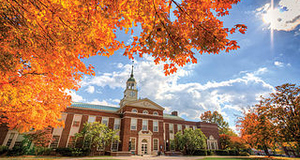The Cost of For-Profit Education: How Much is Your Degree Really Worth?Notice of Proposed Rulemaking 2014The newly crafted attempt by the U.S Department of Education under the gainful employment guidelines proposes the following fundamental provisions, which are slated to take effect in 2016 if enacted (American Council on Education, 2014):
According to the U.S. Department of Education (2014), there are approximately fifty thousand educational programs considered to be gainful employment programs. Those programs have an enrollment of approximately four million students, thirty percent of whom are enrolled in programs at private for-profit institutions. The majority of these students receive federal financial aid, $26 billion of which is in terms of federal loans and approximately $10 billion in federal grants. This is an estimated $36 billion dollars of federal financial aid that is invested in gainful employment education programs. The issue of loan default for students enrolled in such programs is a serious one and it’s addressed in great detail in the Notice of Proposed Rulemaking (U.S. Department of Education, 2014):
In a final analysis, the U.S. Department of Education (2014) argues that “a subset of eleven percent of for-profit institutions account for 90 percent of students in failing or at-risk programs at these types of colleges” (pg. 718). This seems to indicate that the concentration of poorly performing programs is located on a small number of such institutions and that it therefore may not be as widespread in the for-profit college sector as it may initially be understood. Certainly the provisions proposed in the 2014 Notice of Proposed Rulemaking are likely to satisfy many of the proponents of stricter standards of accountability such as many veterans groups and other student-advocacy groups. On the other hand, they closely follow the U.S. Department of Education’s first attempt to arbitrarily set the levels above or below which programs would be flagged. Broad objections are expected to be made again by the Association of Private Sector Colleges and Universities and a new legal battle is likely to ensue. Effects of the Proposed Regulatory ActionDespite the bad press for-profit institutions have received over the recent years in regards to vast enrollment gains due to the attractiveness of federal financial aid, little has been reported about public, state-supported institutions which also have made similar gains in enrollments due to more financial aid being available (Cellini, 2010). Therefore, the proliferation of increasing use of Title IV financial aid is not germane to private for-profit institutions only but to public state-supported institutions as well. It seems that all institutions of higher education, which provide programs of study that may or may not provide graduates with adequate post-college earnings compared to the financial investment made in the attainment of such certificates or degrees, are going to be affected by the U.S. Department of Education’s intended regulatory action. The proposed regulations are not entirely specific to for-profit colleges and universities. Nevertheless, for-profit colleges and universities are expected to be largely affected by the proposed regulatory action because the new rules aim at defunding programs considered to be gainful employment programs which are considered to have poor return on investment. Most of such programs are offered by for-profit institutions. The new regulation would take away federal funding eligibility for institutions if a graduate's loan responsibility is larger than eight percent of expected earnings in his/her career or occupation post-college, or if their student loan default rates exceed thirty percent. Due to the fact that for-profit institutions constitute only approximately ten to eleven percent of the entire higher education sector but, at the same time, they also account for a disproportionate amount (over thirty percent) of the aggregate of all student loans, as well as approximately fifty percent of the aggregate of all student loan defaults (John, Daun-Barnett, & Moronski-Chapman, 2013), these new rules would also disproportionately affect these institutions compared to public or other non-profit institutions with similar issues. There have already been such examples in a very short span of time, the most publicized of all being the fall of Corinthian Colleges, the second largest for-profit institution in the United States. As with every proposed policy, there may be possible unintended consequences. One such consequence of this proposed action, according to the Association of Private Sector Colleges and Universities (2014b), is that it will “…severely limit access and opportunity for students seeking career skills and training; almost immediately, “the regulation will cut off access for hundreds of thousands of students in thousands of programs” and it “will disproportionally impact programs that serve minorities, veterans and at-risk students.” The Association of Private Sector Colleges and Universities (2014b) further argues that such a policy “will also have an immediate impact on the ability of employers to access skilled employees.” Whether this argument is a valid one or not depends on which side of the issue one is. Regardless, an argument for restricting access for many students who may be affected by the new regulation can always be made; the following broader questions are usually met with little or no answer by either side:
If all this were to occur and gainful employment were not an issue any longer, as it seems to not have been prior to the Higher Education Act of 1965, would a skilled workforce still emerge as required by most employers and envisioned by the federal government? Certainly, it is not likely that answers to such questions may occur any time soon – but it certainly is expected for one to pose.Continued on Next Page » Suggested Reading from Inquiries Journal
Inquiries Journal provides undergraduate and graduate students around the world a platform for the wide dissemination of academic work over a range of core disciplines. Representing the work of students from hundreds of institutions around the globe, Inquiries Journal's large database of academic articles is completely free. Learn more | Blog | Submit Latest in Education |


















